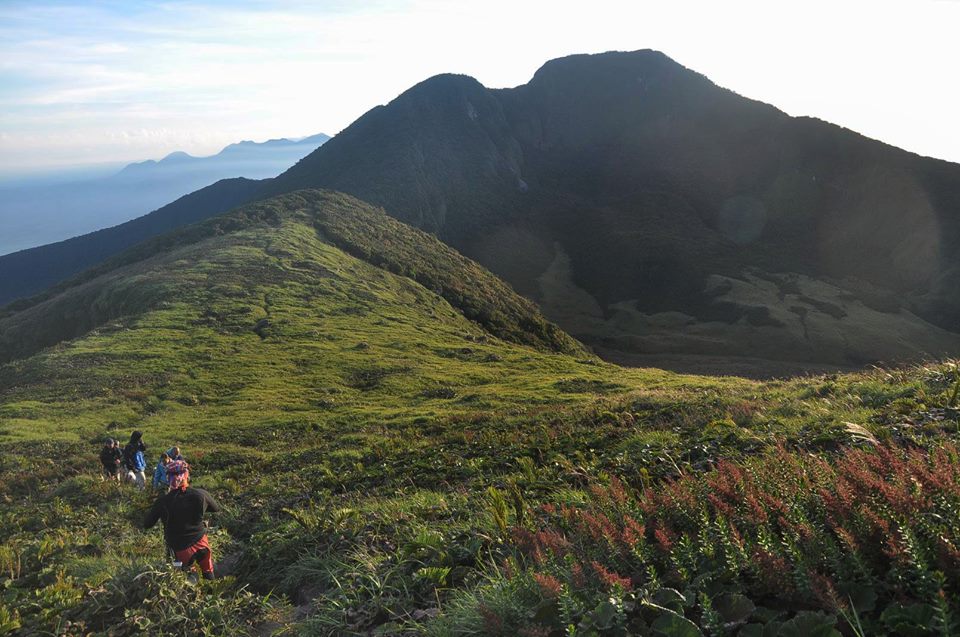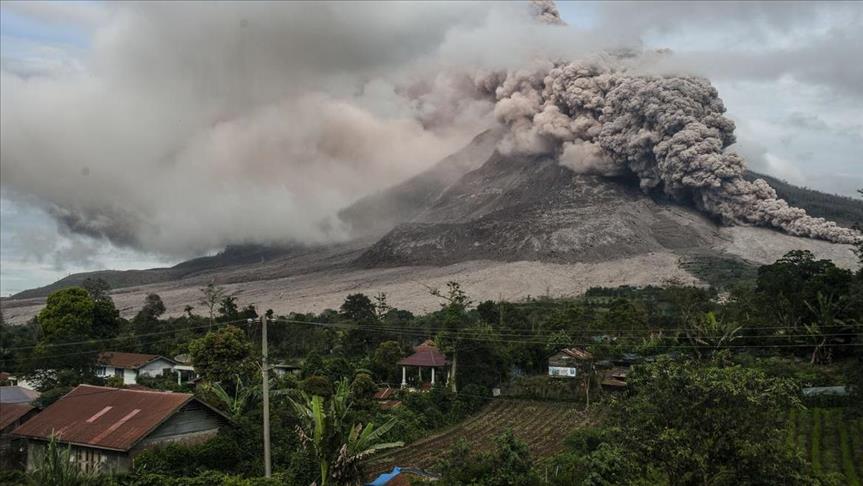The terrible mad dragon of pagan days in the Philippines has returned to Great King mountain, where his tortures and moaning demand of the people once more the human sacrifice. He breathes sulphurous smoke by day, he belches gigantic flames by night, the fields are withering where clouds of voracious locusts swarm over them thick enough to obscure the sun. In short, Mount Kanlaon, giant cradle of the ancient tributes to legends, is in eruption, and the ancient tributes to Great King Laon are being paid.
Will the human sacrifice be made? It may be rustic peasants, though perhaps revived superstition cannot go that far. Beautiful are the stories of this old volcano that dominates the valleys of Negros province, beautiful and imaginative as anything in the old Greek classics.

Two of the Kanlaon legends pertain to different periods of these enchanting islands, one of the pre-Brahman period, the other to the Brahman.
The “Brahman Period” refers to the Indianized Influence in the Philippine Area through the spread of Hinduism. In Hinduism, Brahman connotes the highest Universal Principle, the Ultimate Reality in the universe. In major schools of Hindu philosophy, it is the material, efficient, formal and final cause of all that exists. It is the pervasive, genderless, infinite, eternal truth and bliss which does not change, yet is the cause of all changes. Brahman as a metaphysical concept is the single binding unity behind the diversity in all that exists in the universe.
The first legend goes this way:
In remote times all the people of Negros lived prosperously under the benign rule of Laon. They worked in his fields and shared with him the harvest. When he was visiting them in the Fields one day, gentle showers began to fall. The showers turned to heavy rain, and when King Laon again visited his fields the water was knee deep. Then it was waist deep. Then it was up to his shoulders and all thought of a harvest vanished.
But at least he would have his people. So he called them together and set them to building a mound. “But we have no tools, O Kanlaon!” Kanlaon waved his magic kerchief, soon there were shovels and picks.
“But we have no granite! The mound must be ribbed with granite!”
With another wave of the kerchief all materials were supplied. The people worked with great good will, shovelled and carried on patiently until Mount Kanlaon was built in the midst of the valley with its crest 6,000 feet high. There they dwelt until the flood subsided. Again they worked lustily for the great King Laon and dug a ditch to the sea to drain off the waters from their drowning fields.
Such was the origin of Mount Kanlaon. The new river formed came to be known as Bago (new) river.
The Brahman legend is gruesome. It goes like this:
Long long ago there lived on the summit of Mount Kanlaon a dragon with a body a mile long and a block thick from which extended seven frightful heads gleaming with green eyes. The people of Negros were in mortal terror of this dragon, that breathed smoke by day and belched fire by night. They found that the only way of appeasing him was to sacrifice a virgin to him every New Year, a sacrifice that became a rite of their religion. It was always a peasant girl, for the poor should suffer for their betters, a precept still instinctive among the Filipinos.

The ruler of the unhappy people would choose the virgin to be sacrificed. The little girl, scarcely 12 years old, dressed all in black, would be taken up and left on the slopes of the mountain. If she did not return to the valley then the people knew the dragon had devoured her and would not trouble them more for a whole year; but if she returned, it was a sign that the dragon did not wish to eat a virgin that year but would await the next New Year. This seldom happened. Sometimes the dragon wanted two virgins.
At last the peasants were all gone. When the next New Year came a noble virgin should be sacrificed. This was a difficult situation, since no noble family wished to give a daughter to the dragon. Yet the King dared not select a girl of noble blood, rebellion would be upon the kingdom forthwith at such presumption.
In this predicament there came along a youth who seemed to be from neighboring India, though truly he was a demigod. Learning at court what was troubling the land he said he would slay the dragon, of which he had no fear.
“Slay the dragon, man or god, whoever and whatever you are and you shall have gold dust for wealth and my daughter for spouse,” said the King.
So the youth went up the slopes to slay the dragon. He had power over all animals, with whom he spoke in their tongues. The ants and the bees, when he told them his errand, volunteered to help. They would attack the dragon and sting and blind him. The eagle who had carried the youth to the crest of the mountain said he too would dash in upon the prey with his talons.

So all the ants charged the dragon, with all the bees and a whole troop of fearless eagles. They were successful; they stung out the dragon’s green eyes and bruised his sprawling lips and tore his knotty skin until he was quite helpless, and then he who seemed to be a youth from India stepped up and with his sword, cut off the dragon’s seven heads and took the biggest of them back to the King down in the valley.
From then on the people of Negros have never feared the dragon, and they have become the children of the gods, for the youth, who was a demigod, not merely a son of Mother India, married the princess, who became the mother of a new generation.
All quite wonderful, and now nature is spoiling it all by making Kanlaon occasionally active again. Laon was the demigod’s name. They named the mountain Kan Laon or Great Laon, in gratitude for his slaying of the dragon that lived on its summit.
SOURCE: Philippine Folk Literature: The Myths, Damiana L. Eugenio, UP Press 1993
ALSO READ: BAKUNAWA: The Moon Eating Dragon of Philippine Mythology
Jordan Clark is a Canadian born descendant of Scottish immigrants living on the homelands of the Lekwungen speaking peoples. His interest in Philippine myth and folklore began in 2004. Finding it difficult to track down resources on the topic, he founded The Aswang Project in 2006. Shortly after, he embarked on a 5 year journey, along with producing partner Cheryl Anne del Rosario, to make the 2011 feature length documentary THE ASWANG PHENOMENON – an exploration of the aswang myth and its effects on Philippine society. In 2015 he directed “The Creatures of Philippine Mythology” web-series, which features 3 folkloric beings from the Philippines – the TIKBALANG, KAPRE and BAKUNAWA. Episodes are available to watch on YouTube. Jordan recently oversaw the editing for the English language release of Ferdinand Blumentritt’s DICCIONARIO MITOLÓGICO DE FILIPINAS (Dictionary of Philippine Mythology) and is working on two more releases with fellow creators scheduled for release later this year. When his nose isn’t in a book, he spends time with his amazing Filipina wife of 20 years and their smart and wonderful teenaged daughter.


